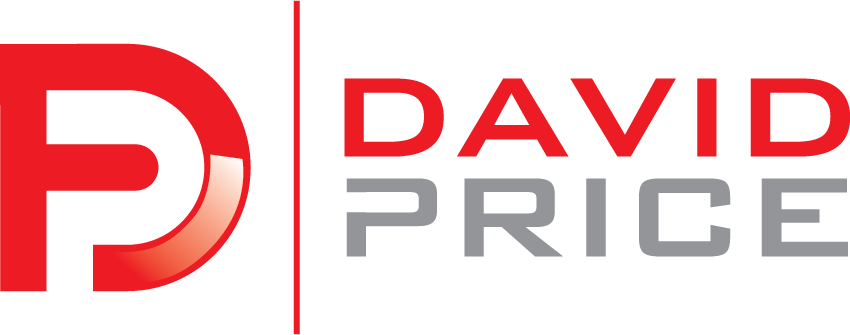Are you tired of losing potential sales and struggling to close deals? If you’re looking to increase your closing ratio and boost your sales success, you’ve come to the right place.
Master the art of closing deals with these proven steps. Boost your closing ratio and skyrocket your sales success.
In this article, we will explore ten essential steps that will help you improve your closing skills and achieve better results.
Firstly, it’s crucial to understand your target audience. Knowing who you are selling to and what their needs and pain points are will significantly increase your chances of closing a deal. By taking the time to research and understand your customers, you can tailor your approach and offer customized solutions that address their specific challenges.
Building rapport and trust is another vital step in increasing your closing ratio. Customers are more likely to buy from someone they like and trust, so focus on establishing a genuine connection. Show interest in their lives and listen actively to their concerns. By building trust, you create a solid foundation for successful sales conversations.
get this done
- Understanding Your Target Audience
- Building Rapport and Trust
- Effective Communication and Active Listening
- Identifying and Addressing Objections
- Following up and Maintaining Relationships

Understanding Your Target Audience
It is crucial for boosting your closing ratio and making sales easier, so let’s dive in and discover exactly what makes them tick!
To effectively sell your product or service, you need to understand who your target audience is and what motivates them. Start by conducting market research to gather information about their demographics, interests, and pain points. This will help you tailor your sales approach and messaging to resonate with them on a deeper level.
Once you have a clear understanding of your target audience, it’s important to segment them into different groups based on their characteristics and needs. This allows you to create personalized sales strategies for each segment, increasing your chances of closing the deal.
For example, if you’re selling a software product, you may have different segments for small businesses, medium-sized enterprises, and large corporations. Each segment will have unique pain points and requirements, so you can customize your sales pitch accordingly.
In addition to demographics and segmentation, it’s crucial to understand your target audience’s buying behavior. Are they impulse buyers or do they take their time to make a decision? Do they prefer to research extensively before making a purchase or do they rely on recommendations from others? By understanding their buying behavior, you can align your sales process to meet their needs.
For instance, if your audience tends to research extensively, provide them with detailed product information and case studies to support their decision-making process.
Lastly, don’t forget to listen to your target audience. Engage with them through surveys, social media, or customer feedback channels to gather insights and feedback. This will help you identify any gaps in your sales process and make necessary improvements. By actively listening to your audience, you can continuously refine your sales approach and increase your closing ratio.
Understanding your target audience is essential for increasing your closing ratio. Conduct market research, segment your audience, and understand their buying behavior to tailor your sales strategies. Additionally, actively listen to your audience to gather insights and make improvements. By taking these steps, you’ll be able to connect with your target audience on a deeper level and close more sales.
Building Rapport and Trust
To truly connect with your prospects and build a strong foundation for trust, it’s essential to establish rapport right from the start. Building rapport involves creating a genuine connection with your potential customers.

It’s about finding common ground and showing that you understand their needs and concerns. This can be done by actively listening to them, asking questions, and showing empathy. When you take the time to build rapport, prospects are more likely to trust you and feel comfortable sharing their thoughts and concerns.
One way to build rapport is by finding common interests or experiences with your prospects. Look for opportunities to connect on a personal level, whether it’s through shared hobbies, experiences, or even a sense of humor. By finding common ground, you can establish a sense of camaraderie and create a bond that goes beyond the sales pitch.
Another important aspect of building rapport is showing genuine interest in your prospects. Take the time to ask open-ended questions and really listen to their responses. Show that you value their opinions and are invested in finding a solution that meets their needs. This not only helps you better understand their pain points but also demonstrates that you’re committed to their success.
In addition to building rapport, it’s important to establish trust with your prospects. Trust is the foundation of any successful business relationship. To build trust, be transparent and honest in your communication. Avoid making false promises or exaggerating the benefits of your product or service. Instead, focus on providing accurate information and setting realistic expectations.
Trust takes time to build, but once established, it can lead to long-term customer relationships and increased closing ratios.
By focusing on building rapport and trust with your prospects, you can increase your closing ratio. When prospects feel a genuine connection and trust in your abilities, they’re more likely to choose your product or service. Remember to take the time to establish rapport, find common ground, show genuine interest, and be transparent in your communication.
These steps will help you build strong relationships with your prospects and ultimately increase your closing ratio.
Effective Communication and Active Listening

Immerse yourself in the art of effective communication and active listening, allowing the words of your prospects to paint a vivid picture in your mind. When engaging in a conversation with a potential customer, it’s crucial to focus on their needs and concerns. Pay attention to their verbal cues, body language, and tone of voice. By doing so, you can better understand their perspective and tailor your response accordingly.
Remember, effective communication is a two-way street, and active listening plays a vital role in building rapport and trust.
To be an effective communicator, it’s important to choose your words carefully and deliver them with clarity and confidence. Make sure to articulate your thoughts in a concise and understandable manner. Avoid using technical jargon or complex language that might confuse your prospects. Instead, use simple and relatable language that resonates with them. By speaking their language, you can establish a connection and make them feel comfortable discussing their needs with you.
Active listening goes beyond just hearing the words being spoken. It involves fully engaging with the speaker and demonstrating genuine interest. Avoid interrupting or rushing the conversation. Instead, give the prospect space to express their thoughts and ideas. Show empathy and understanding by nodding, maintaining eye contact, and using verbal cues such as “I see”or “That makes sense.”By actively listening, you create an environment where prospects feel heard and valued, leading to stronger relationships and increased closing ratios.
In addition to actively listening, asking open-ended questions can help you uncover valuable information about your prospects’ needs and motivations. These questions encourage the prospect to provide detailed responses, allowing you to gain insight into their pain points and desires. By asking open-ended questions, you not only demonstrate your genuine interest but also gather the necessary information to tailor your pitch and address their specific concerns. This level of personalization can significantly increase your chances of closing the deal.
Effective communication and active listening are essential steps in increasing your closing ratio. By immersing yourself in the art of communication, you can better understand your prospects’ needs and concerns. Choose your words carefully, speak their language, and deliver your message with clarity and confidence. Actively listen by paying attention to verbal cues and body language, and ask open-ended questions to gather valuable information. By implementing these strategies, you’ll build rapport, establish trust, and ultimately increase your closing ratio.

Identifying and Addressing Objections
Discover how to effectively address objections and overcome barriers to success, igniting a sense of confidence and empowerment within your audience.
When it comes to increasing your closing ratio, one of the most important skills you need to master is identifying and addressing objections.
Objections are the concerns or doubts that potential customers have about your product or service. By understanding and addressing these objections head-on, you can build trust and credibility, ultimately increasing your chances of closing the deal.
The first step in addressing objections is to actively listen to your customers. Pay attention to their concerns and ask probing questions to understand the root cause of their objections. This will not only show your customers that you value their input, but it’ll also give you valuable insights into their thought process. By actively listening, you can tailor your responses to directly address their specific objections, making it more likely that they’ll see the value in your offering.
Once you have identified the objections, it’s important to empathize with your customers. Put yourself in their shoes and understand why they might have these concerns. This’ll allow you to respond in a way that makes them feel heard and understood. Empathy is a powerful tool in building rapport and trust with your customers, and it can go a long way in overcoming objections.
After empathizing with your customers, it’s time to provide them with a solution. This is where your product knowledge and expertise come into play. Use your knowledge to address their concerns and explain how your product or service can solve their problems. Be confident in your offering and highlight its unique features and benefits. By presenting a clear and compelling solution, you can alleviate their objections and increase your chances of closing the deal.
Addressing objections is an essential skill in increasing your closing ratio. By actively listening to your customers, empathizing with their concerns, and providing them with a solution, you can overcome barriers to success and inspire confidence in your audience. Remember, objections aren’t roadblocks, but rather opportunities to showcase the value of your offering. So, embrace objections and turn them into stepping stones towards closing more deals.
Following Up and Maintaining Relationships
Maintaining strong relationships and consistently following up with your clients is key to nurturing long-term connections and fostering success in your business.

When it comes to closing deals and increasing your closing ratio, following up is crucial. After all, it’s not enough to just make the initial contact and hope for the best. You need to stay engaged and continue building trust with your clients.
One important step in following up is to have a clear plan in place. Set reminders for yourself to reach out to clients at specific intervals, whether it’s a week after the initial contact or a few months down the line. Be proactive and take the initiative to check in with them regularly. This shows that you value their business and are committed to helping them succeed.
Another key aspect of maintaining relationships is personalized communication. Don’t just send generic follow-up emails or make generic phone calls. Take the time to understand each client’s unique needs and preferences. Use this knowledge to tailor your follow-up messages and make them more relevant and meaningful. Personalized communication goes a long way in building trust and making clients feel valued.
Lastly, don’t forget the power of staying top-of-mind. Keep your clients updated on any new developments or offerings that may be relevant to them. Share industry insights or helpful resources that can benefit their business. By consistently providing value, you position yourself as a trusted advisor and increase the likelihood of future business opportunities.
Following up and maintaining relationships is essential for increasing your closing ratio. Set a clear plan, personalize your communication, and stay top-of-mind with your clients. Remember, building long-term connections takes time and effort, but the rewards are worth it. By consistently following up and nurturing relationships, you’ll not only increase your closing ratio but also foster long-term success in your business.
conclusion

In conclusion, increasing your closing ratio requires a strategic and focused approach. By understanding your target audience and building rapport and trust, you lay the foundation for successful sales interactions.
Effective communication and active listening further enhance your ability to address objections and close deals.
But the work doesn’t stop there. Following up with potential customers and maintaining relationships is crucial for long-term success. This involves regular communication, providing value, and being responsive to their needs.
By implementing these steps, you can significantly increase your closing ratio and achieve greater sales success. So, go out there, connect with your audience, and close those deals!.

